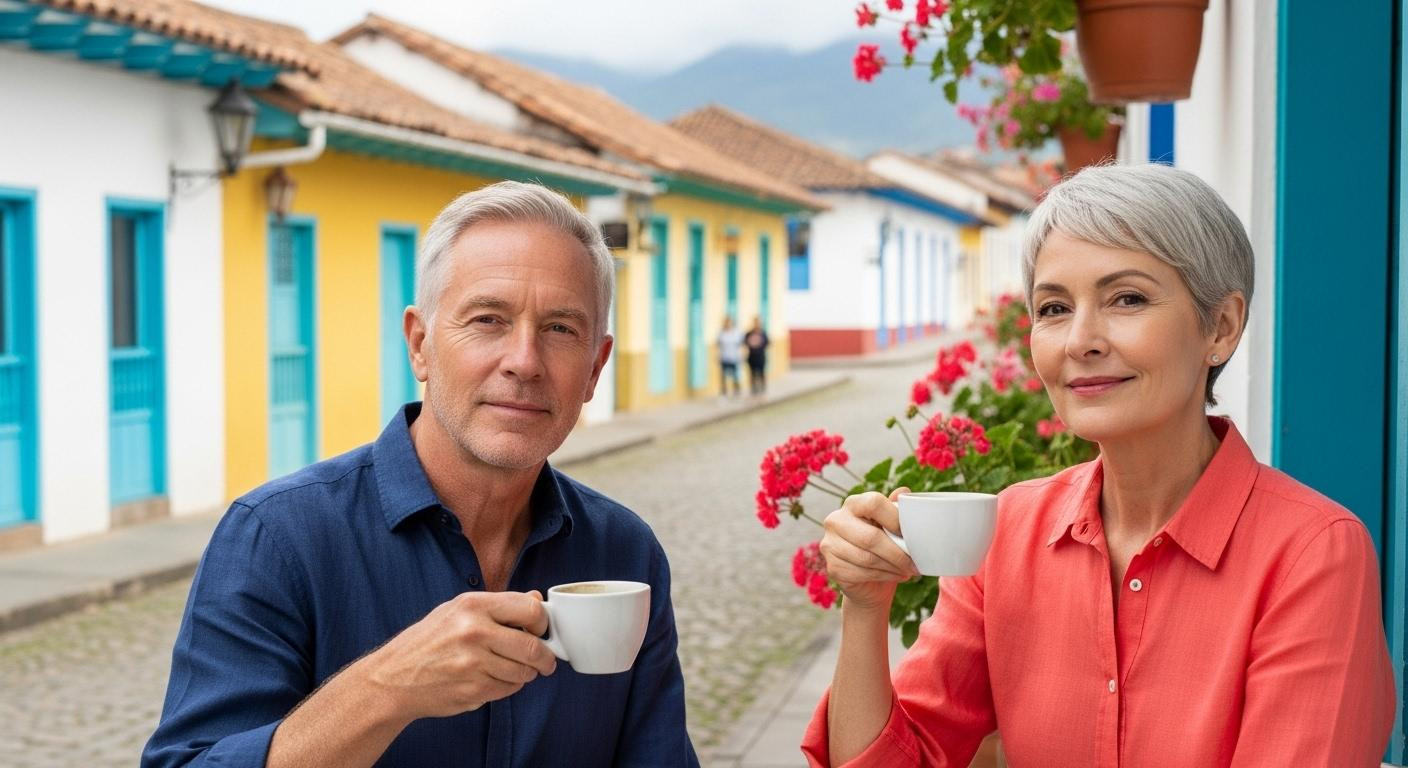At 6:30 AM in Cuenca, Ecuador, the cathedral bells chime softly while retirees sip coffee at $2 per cup. Their monthly budgets stretch three times further than any comparable U.S. city. Across South America’s most senior-friendly destinations, North Americans discover retirement isn’t about living cheaply. It’s about living well for less.
Four cities stand out for their combination of affordable healthcare, stable communities, and quality infrastructure. Cultural experiences that cost hundreds elsewhere become daily pleasures here.
What South America’s senior-friendly cities actually cost monthly
Current retirees in these destinations report monthly expenses ranging from $1,280 to $2,350 for comfortable living. Cuenca, Ecuador offers the lowest costs at $900-1,520 per month. Medellín, Colombia follows at $1,200-1,720 monthly.
Buenos Aires, Argentina requires $1,630-1,875 due to inflation pressures. Montevideo, Uruguay commands the highest budgets at $1,985-2,350 monthly. All figures include housing, healthcare, food, and entertainment.
Recent visa requirement changes affect planning. Ecuador now requires $1,410 monthly pension income, up from $800 previously. Colombia maintains its $1,000-1,100 threshold. Argentina officially requires $1,390 but experts recommend showing $2,000 due to economic volatility.
Uruguay and Colombia where $1,500 monthly creates comfort
Montevideo’s Pocitos neighborhood attracts retirees seeking beachfront stability. Accommodations range from $600-1,500 monthly for quality apartments. The city’s progressive healthcare system ranks among Latin America’s best.
Restaurant meals average $15-30, while grocery shopping costs 30% less than U.S. equivalents. The peso’s gradual depreciation affects budgets modestly, with 6% inflation over the past year.
Medellín’s spring climate economy
Colombia’s “City of Eternal Spring” maintains 70-85°F temperatures year-round. Authentic local experiences complement the 10,000+ North American expat community.
El Poblado apartments cost $450-750 monthly, while Laureles offers better value at $400-550. Healthcare ranks as Colombia’s strongest retirement advantage, with private insurance costing $85-120 monthly.
Buenos Aires’ cultural richness challenges
Argentina’s capital offers unmatched cultural depth but economic instability complicates budgeting. Accommodation costs jumped 32% over the past year, from $650 to $920 for similar apartments.
The parallel “blue dollar” exchange rate provides better value for U.S. currency. Groceries increased 45% annually, though restaurant meals remain affordable at $10-25. Cultural events and tango lessons cost fraction of European equivalents.
Ecuador and Argentina budget flexibility from $900-2,000
Cuenca’s UNESCO World Heritage status combines with Ecuador’s dollarized economy for predictable expenses. Monthly utilities average just $38, confirmed by multiple resident reports.
Healthcare in Ecuador ranks 20th globally by Bloomberg’s efficiency index, surpassing U.S. rankings. Private insurance costs $90-110 monthly. Cultural festivals and traditional experiences occur regularly without tourist price premiums.
Cuenca’s mountain serenity advantage
The city’s 8,500-foot elevation provides comfortable temperatures of 60-75°F year-round. Three-course restaurant meals for two average $15, while housing ranges from $390-450 monthly.
English-speaking medical facilities serve the 5,000-7,000 North American retiree population. Prescription medications cost 60-75% less than U.S. prices for common senior needs.
Hidden expenses seniors discover
International wire transfer fees range from $15-45 per transaction. Argentina adds 35% “PAIS tax” on USD conversions. Rental deposits typically require 2-3 months upfront payment.
Shipping personal belongings costs $2,500-4,000 for 20-foot containers, plus 15-20% customs duties. Travel logistics become crucial for maintaining U.S. connections.
Healthcare and visa costs seniors need to know
Private healthcare insurance averages $85-160 monthly across the four cities. Specialist visits cost $25-60, compared to $200-400 in the United States. Emergency room visits range from $100-400 at private hospitals.
Retirement visa applications cost $200-450 in government fees, plus $400-1,500 for legal assistance. Annual renewals require $100-150 plus continued income verification. Processing times vary from 30-90 days depending on the country.
U.S. citizens must maintain Medicare Part A coverage and file annual tax returns, adding $300-500 yearly in accounting fees.
Your questions about senior-friendly South American cities answered
Which city offers the best healthcare-to-cost ratio for retirees?
Medellín provides the strongest healthcare value, combining Colombia’s excellent medical system with lowest insurance premiums at $85-120 monthly. Specialist visits cost $30-45, while prescription medications run 70-80% below U.S. prices.
How do seasonal costs fluctuate for year-round residents?
December-February brings 10-25% rental increases in tourist areas. Cuenca sees 15-20% higher costs during American snowbird season. Medellín maintains consistent pricing year-round due to stable climate.
What hidden expenses catch North American retirees unprepared?
Currency exchange losses, especially in Argentina’s volatile economy, can cost 10-15% annually. Import duties on personal belongings, cell phone plans ($8-25 monthly), and utility connection fees ($50-100) surprise new residents.
Evening settles over Montevideo’s Rambla as couples stroll the waterfront. Their combined Social Security benefits, insufficient for decent U.S. coastal living, fund comfortable retirement with cultural richness. South America offers dignity, not just affordability.
